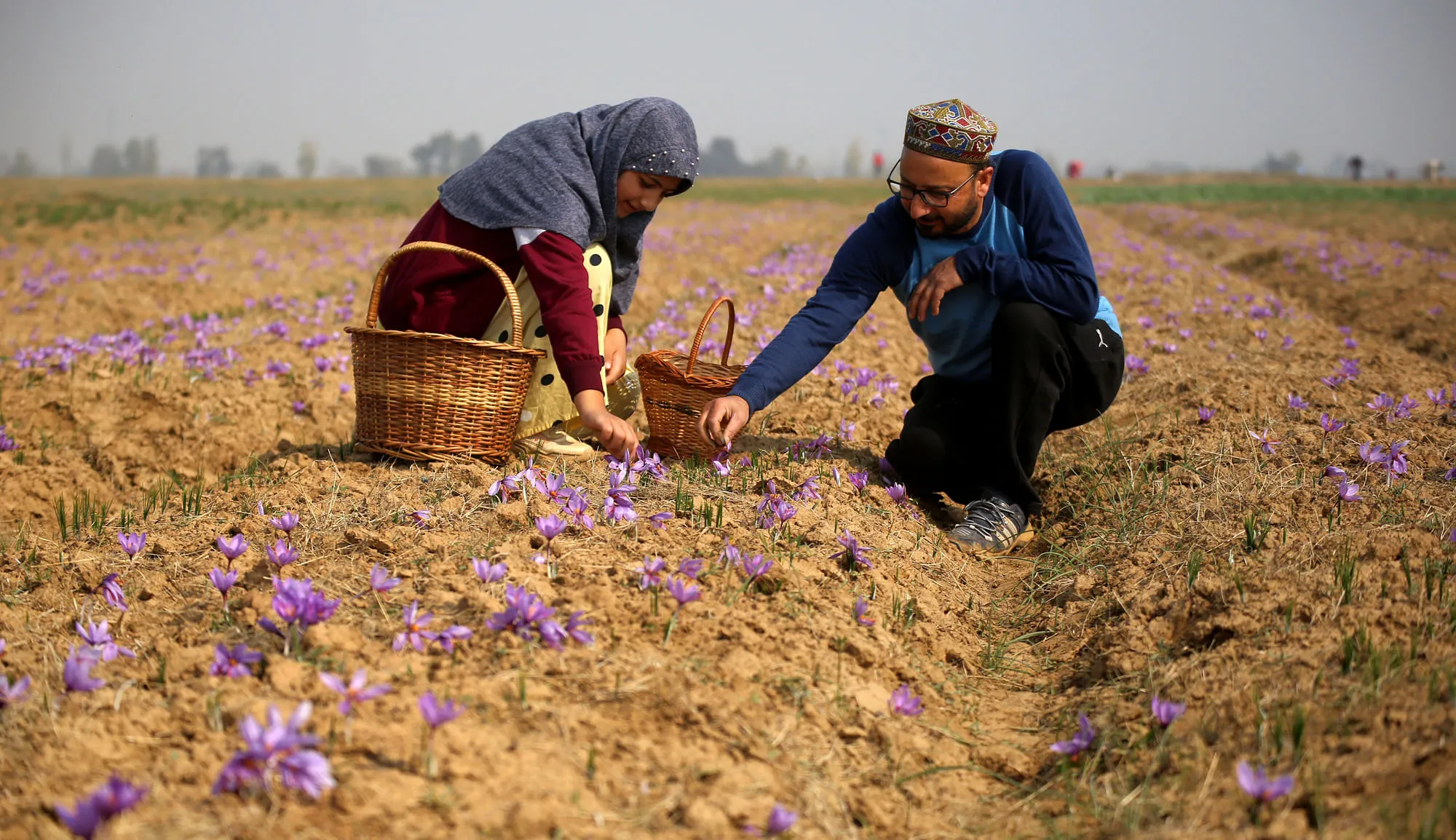In the Middle East and European countries such as Austria, Germany and England saffron has disappeared and been exposed to strong genetic erosion.
Sterility in saffron limits the application of unscientific and traditional propagation methods. Using scientific propagation methods, the growing genetic variability in saffron is undertaken by different groups which are scientific in nature (Fernández, 2004).
Of the various factors that cause the loss of saffron biodiversity all over the world, Pampore flora is faced with many threats such as land fragmentation, infringement, degradation of Karewa saffron land, environmental pollution, and falling production and productivity levels.
The cultivation of saffron as a viable agricultural initiative in J&K encountered a momentous risk of extinction for the reason that its area under cultivation declined; in that way diminishing the production and productivity levels and accordingly threatening its biodiversity too.
The worrying circumstances were accredited to many factors including obsolete agrarian activities such as elongated plantation phase, deprived soil condition, and high occurrence of pests and disease.
Moreover, such anguish was credited to traditional post-harvest practices like deferred stigma parting and disorganised marketing system with intermediaries taking a major share of market arrivals (Ganie & Nusrath, 2016; Hamid, Kachroo, Bhat, Javeed, & Peer, 2017) leading to loss of the growers in terms of lower returns and extensive adulteration.
Accordingly, there is a large distribution of fake saffron as there are deficiencies of recognised practices to detect saffron adulteration (Petrakis, Cagliani, Polissiou, & Consonni, 2015).
These reasons made growers hopeless about forthcoming prospects of saffron, leading to its abandonment or diversification of land usage.
Saffron’s plentiful characteristics coupled with its role in the Jammu & Kashmir economy calls for a definite consideration to eradicate all these problems concerning its production, marketing, and export. Jammu and Kashmir have natural monopoly power in the production of saffron. Saffron growers once were very happy.
However, with the low skills, little knowledge, less level of investment, and poor education level of the growers (Qadri & Bhat, 2019) they failed to increase the production, productivity levels, area, and exports. As a result, saffron is not that attractive as before. We don’t find any attraction for saffron growers towards its investment.
On the other hand, we find great demand for saffron worldwide for the reason that it has great utility and consumers are basically interested in the characteristics of the good and not in the good itself.
COVID-19 which has been declared a pandemic by the World Health Organization made diseases very common especially respiratory diseases. COVID-19 invites throat irritation, cough, blocking or runny nose, anxieties or fever, breathing trouble, body or muscle pains, headache, fatigue, diarrhoea, nausea, and taste or smell loss (Hussaini, Jan, & Wani, 2021).
Generally, saffron and particularly Kashmiri saffron is a universal remedy against a series of disorders and diseases. There is reduction in muscle pain, stress, runny or blocked nose, cough, and headache etc. when we add saffron to hot water or milk. Moreover, saffron is an immunity booster when we use it in food, deserts, and drinks and it is need of hour in this pandemic to raise the levels of immunity in our body.
Nowadays we have an unhealthy and sedentary lifestyle preventing the development of strong immunity and inviting various lethal ailments. If we go environment friendly and organic in our lifestyle there is a very high probability to boost our immunity and fight infections and diseases.
Organic foods include food that is produced by organic farming emphasising practices that conserve biodiversity, cycle resources, bring ecological balance, and endorse sustainable development which meet the needs of present generation without compromising the needs of future generation.
In saffron farming too we need to incorporate organic farming practices so as to conserve saffron biodiversity. It is very important to add organic saffron to the daily diet which can help in improving overall respiratory and other health disorders.
Accordingly, it is high time to go green and preserve saffron biodiversity in Jammu and Kashmir. The decline in saffron land in some areas of the world, mainly in the Mediterranean Basin countries has resulted in a consistent genetic erosion of saffron (Pascual, Fernandez & Roldan, 2010).
As saffron multiplies entirely in a vegetative way, the preservation of the seemingly scarce saffron genetic diversity is greatly valuable to undertake any propagation or breeding.
There is very limited literature related to saffron bio-diversity at both national and international level. Even in Jammu and Kashmir we find very limited research on saffron bio-diversity.
More empirical research is needed highlighting such a role so as to prevent genetic erosion of this very crop.
Keeping in view the great role of the horticulture sector in J&K and saffron being the key horticulture crop with high market value, there is a need to highlight different issues concerning the saffron industry so that people involved in this trade will get benefit and Gross Domestic Product will improve.
Dr. Binish Qadri, Assistant Professor, Department of Economics, Cluster University Srinagar.
Disclaimer: The views and opinions expressed in this article are the personal opinions of the author.
The facts, analysis, assumptions and perspective appearing in the article do not reflect the views of GK.






